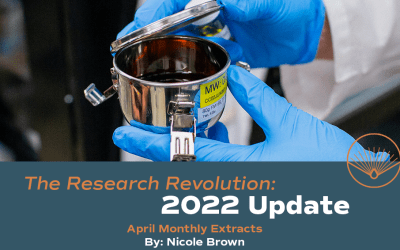Author: Nicole Brown
July 1, 2021 – 8 min read
We all have brands we love. We cherish the products they offer, we closely watch their every move, we proudly extol their virtues to friends, family, and even total strangers.
What drives this kind of love? Is it unattainability? Guilty pleasures? Aesthetic perfection? When we’re obsessed with a brand, it’s usually because it speaks to us in a way no other brand does. Nuun, a collection of functional hydration beverages, commands this kind of obsession for a few key reasons:
- Need-state specific products focused on outcomes such as immunity, energy, and sleep
- Single-serve dose tablets, conveniently packaged for ease of use, especially on-the-go
- Delightful, effervescent sensory experience, in a variety of delicious flavors
- Product ritual with key occasions of use, including everyday wellness as well as pre and post exercise
- An efficacious product that delivers on its brand promise of supporting hydration and delivering key health benefits
Like Nuun, every brand needs to start thinking about curating “brand obsession” with consumers in their own unique way.
Earlier this month, Interbrand selected the 30 companies that best exemplify brand growth, and the potential for this type of obsession. Brands were selected against three core criteria:
- Understanding human truths (with key indicators including social post volume and growth)
- Creating exceptional brand experiences (brands that answer unmet consumer needs)
- Delivering superior business results
Three relevant themes of innovation emerged from the 2021 Breakthrough Brands:
- Power in Representation: The impact and momentum of Black Lives Matter has had ripple effects on the corporate world and given momentum behind companies who focus on increasing representation and diversity in different categories. Brands like Greenwood Bank, Omsom, SpringHill Company and BREAD Beauty Supply are changing the conversations around how these communities are spoken to, represented and empowered.
- Flipping the Focus on Preventative Health: Even in spite of Covid, new brands and technologies are democratizing healthcare – making monitoring and diagnostics available to those on lower incomes, with less comprehensive insurance and the time-poor. Healthy.io, Butterfly Network and Owlet are key to fixing this critical aspect of the healthcare lifecycle, helping lift the pressure and impact on the entire healthcare system.
- Tackling Taboos: A long time in the making, we are seeing an explosion of brands in the personal care space bring empowerment and acceptance of our very human issues. With the likes of Starface, Megababe and Frida Mom, taboo’s have never been more mainstream.
(The full report, including the methodology, can be downloaded here.)
When it comes to the CBD industry, the need to create brand obsession is even more critical. According to New Frontier Data’s released their Consumption Drivers report, 49% of surveyed consumers do not have a preferred CBD brand, emphasizing an opportunity for brands to differentiate with product innovation.
“As the market is flooded with more product choices, CBD brands and retailers would be well-served to delineate and target their consumers as they would in any other mainstream product category,” noted New Frontier Data Founder and Executive Chair Giadha A. DeCarcer.
Certain brands have started to take note.
- In regards to tackling taboos, Rae Wellness, a socially-conscious, women-led wellness brand, is partnering with Radicle Science to conduct one of the first and largest randomized, controlled human studies to evaluate the effects of commercially available non-prescription CBD products on women’s health and wellness.
- In another example, Temper offers daily fasting mints, combining physical products, cutting edge digital therapeutics, and world class behavior change technologies focused on metabolic fitness.
- Personal care major Colgate-Palmolive has developed an antiperspirant formula containing cannabidiol that it says works as an anti-irritant on the skin. Colgate also recently filed for a trio of patents for oral care formulas using CBD, formulas it said it has developed for improved antibacterial efficacy and anti-inflammatory action.
As the CBD market has matured, consumers have had the opportunity to engage with cannabinoids on their terms. New Frontier Data’s Consumption Drivers report provides an in-depth analysis on CBD consumer groups and the factors shaping consumption behaviors. In the report, respondents were grouped into four cohorts based on their primary reason to consume CBD
- Medical
- Pain Management
- General Wellness
- Unwinding
From those primary reasons, the survey examines the attitudes, beliefs, and behaviors associated with different motivations for CBD consumption, to glean better understanding about the needs and characteristics of diverse CBD consumers. Understanding these emerging consumer groups allows brands to cater to the rapidly evolving consumer base and develop products and messaging aligned with their evolving needs.
MEDICAL
Medical consumers are the smallest cohort, and their particular needs and behaviors make them the easiest to identify. Simply stated, these consumers use CBD as they would a prescription medicine and they are far more likely than are others to indicate that they consume CBD daily, as is done with many common medications. As the group with the most frequent interaction with CBD, Medical consumers are also the cannabinoid’s strongest advocates, thus believing strongly in the benefits of CBD, and sharing information about it widely within their social circles.
PAIN
Pain Management consumers – the largest and oldest cohort – while relatively uninterested in and uninformed about the broader cannabis market, are highly satisfied with CBD for their particular needs, and tend not to sample beyond what already works for them. Nearly half (48%) of Pain Management consumers are unsure of the differences between CBD formulations such as full spectrum oil, broad spectrum oil, whole plant, or isolate. As a group, Pain Management consumers have successfully addressed a specific need, are happy with results, and uninterested in further adjusting their habits.
WELLNESS
Wellness consumers primarily utilize CBD to promote overall health and wellness, as with a nutritional supplement. Like most CBD consumers, they have an overall positive impression of CBD and use it for a variety of reasons. These consumers are among the least likely to have had a conversation about CBD (11%), and nearly 1 in 5 (17%) do not know any friends or family who consume CBD. As such, they are among the least likely to have been recommended CBD (25%), and least likely to have recommended CBD (50%). Regardless of their reason for consumption, consumers hold an incredibly high opinion of CBD. Without social reinforcement, General Wellness consumers have cultivated a slightly less exuberant (though still generally positive) view of CBD.
UNWINDING
The final identified cohort — Unwinding consumers (the youngest group on average)—have habits largely driven by interaction within their social circles who use CBD. While they are more infrequent consumers than are other cohorts, they use a relatively broad range of products, which they source most often from personal connections, and typically utilize CBD to relieve stress or reduce anxiety. As such, they are more likely to consume CBD sporadically, as needed. Given that their social connections are major factors in guiding their behavior, Unwinding consumers were among the least likely to identify a preferred brand. In fact, more than half (54%) claimed to have no preferred brand, while 1 in 5 (20%) claimed to rarely know which brand they purchase. The lack of entrenched brand loyalty for most Unwinding consumers highlights the significant opportunity that remains for brands to acquire shares of minds and wallets as the space continues to mature.
While Medical consumers are most likely to be regimented in their use, more likely to be brand-loyal, and most focused on dosing, other consumers groups are far less entrenched in their product preferences and consumption habits. As a group, Unwinding consumers will continue to seek new products on the market until they identify a form best suited to address their needs, and as such, is a key target for creating a brand worthy of obsession.
UNWINDING CONSUMERS: THE BRAND OBSESSION OPPORTUNITY
Unwinding consumers are the most open to trying new products, and as a group, have not yet found a brand to which they are loyal. As a result, they present the most salient near-term commercial opportunity for product development. Below, we highlight the top strategies for targeting this key consumer segment:
- Novel Cannabinoids Ingredients: To deliver on the product promise for unwinding consumers, it is a smart strategy to explore formulations with the more novel and rare cannabinoids ingredients. For example, recent research showed that CBDA can act as an effective anti-inflammatory agent, while another study found that CBDA was a thousand times more powerful than CBD for anti-anxiety effects. Other rare cannabinoids such as CBN and CBDV further possess potential for deep relaxation and relief.
- Nootropics: Although they have a fancy name, nootropics are actually pretty common — L-Theanine is found in tea, but also comes in the form of a supplement; Creatine, a popular bodybuilding powder, fuels brain cells; and even caffeine, the one thing many of us can’t live without, is a nootropic. With Unilever’s recent acquisition of Onnit, whose hero products feature nootropic ingredients, these mentally stimulating supplements are going mainstream. We expect to continue to see more products boasting the energy-managing, cognitive-enhancing and mood-moderating effects of adaptogens, as unwinding consumers continue to seek holistic and preventive ways to manage their mental health.
- Avant-Garde Form Factors: Beyond ingredients and sophisticated formulations, innovative and inventive forms will help to drive trial, ease of use, and brand loyalty. Liweli, a cannabinoid wellness lifestyle brand, features Stress Melts, 20mg CBD chewable tablets, in their collection, and Pym offers all-natural amino acid Mood Chews to support calm and relaxation.
- Functional Beverages: Beverages are not just about quenching thirst anymore. Led by millennials and Gen Z, more and more consumers are looking for functional beverages that deliver nutritional benefits in the never-ending quest to be healthier, with Nuun being a prime example of this expanding trend. The functional beverage category is one of the fastest growing nutritional markets out there with a 8.66% CAGR by 2024 — this change is being propelled by young consumers looking for beverages that deliver real benefits like enhanced hydration and cognitive support while cutting alcohol and sugar consumption. For a deeper understanding of the youth movement in functional beverages, you can refer to the recent white paper published by Food & Beverage Insider.
If you’re just starting to build a brand, these focus areas should guide you in its development. If you have a brand already, and it seems lacking, consider adjusting your product portfolio to include the strategies outlined above.
The OBX team exists to solve the problems facing today’s consumers, thrives on disrupting the status quo, and welcomes you to tackle the challenge of building the products worthy of true love and obsession.
Author: Nicole Brown
July 1, 2021 – 8 min read
We all have brands we love. We cherish the products they offer, we closely watch their every move, we proudly extol their virtues to friends, family, and even total strangers.
What drives this kind of love? Is it unattainability? Guilty pleasures? Aesthetic perfection? When we’re obsessed with a brand, it’s usually because it speaks to us in a way no other brand does. Nuun, a collection of functional hydration beverages, commands this kind of obsession for a few key reasons:
- Need-state specific products focused on outcomes such as immunity, energy, and sleep
- Single-serve dose tablets, conveniently packaged for ease of use, especially on-the-go
- Delightful, effervescent sensory experience, in a variety of delicious flavors
- Product ritual with key occasions of use, including everyday wellness as well as pre and post exercise
- An efficacious product that delivers on its brand promise of supporting hydration and delivering key health benefits
Like Nuun, every brand needs to start thinking about curating “brand obsession” with consumers in their own unique way.
Earlier this month, Interbrand selected the 30 companies that best exemplify brand growth, and the potential for this type of obsession. Brands were selected against three core criteria:
- Understanding human truths (with key indicators including social post volume and growth)
- Creating exceptional brand experiences (brands that answer unmet consumer needs)
- Delivering superior business results
Three relevant themes of innovation emerged from the 2021 Breakthrough Brands:
- Power in Representation: The impact and momentum of Black Lives Matter has had ripple effects on the corporate world and given momentum behind companies who focus on increasing representation and diversity in different categories. Brands like Greenwood Bank, Omsom, SpringHill Company and BREAD Beauty Supply are changing the conversations around how these communities are spoken to, represented and empowered.
- Flipping the Focus on Preventative Health: Even in spite of Covid, new brands and technologies are democratizing healthcare – making monitoring and diagnostics available to those on lower incomes, with less comprehensive insurance and the time-poor. Healthy.io, Butterfly Network and Owlet are key to fixing this critical aspect of the healthcare lifecycle, helping lift the pressure and impact on the entire healthcare system.
- Tackling Taboos: A long time in the making, we are seeing an explosion of brands in the personal care space bring empowerment and acceptance of our very human issues. With the likes of Starface, Megababe and Frida Mom, taboo’s have never been more mainstream.
(The full report, including the methodology, can be downloaded here.)
When it comes to the CBD industry, the need to create brand obsession is even more critical. According to New Frontier Data’s released their Consumption Drivers report, 49% of surveyed consumers do not have a preferred CBD brand, emphasizing an opportunity for brands to differentiate with product innovation.
“As the market is flooded with more product choices, CBD brands and retailers would be well-served to delineate and target their consumers as they would in any other mainstream product category,” noted New Frontier Data Founder and Executive Chair Giadha A. DeCarcer.
Certain brands have started to take note.
- In regards to tackling taboos, Rae Wellness, a socially-conscious, women-led wellness brand, is partnering with Radicle Science to conduct one of the first and largest randomized, controlled human studies to evaluate the effects of commercially available non-prescription CBD products on women’s health and wellness.
- In another example, Temper offers daily fasting mints, combining physical products, cutting edge digital therapeutics, and world class behavior change technologies focused on metabolic fitness.
- Personal care major Colgate-Palmolive has developed an antiperspirant formula containing cannabidiol that it says works as an anti-irritant on the skin. Colgate also recently filed for a trio of patents for oral care formulas using CBD, formulas it said it has developed for improved antibacterial efficacy and anti-inflammatory action.
As the CBD market has matured, consumers have had the opportunity to engage with cannabinoids on their terms. New Frontier Data’s Consumption Drivers report provides an in-depth analysis on CBD consumer groups and the factors shaping consumption behaviors. In the report, respondents were grouped into four cohorts based on their primary reason to consume CBD
- Medical
- Pain Management
- General Wellness
- Unwinding
From those primary reasons, the survey examines the attitudes, beliefs, and behaviors associated with different motivations for CBD consumption, to glean better understanding about the needs and characteristics of diverse CBD consumers. Understanding these emerging consumer groups allows brands to cater to the rapidly evolving consumer base and develop products and messaging aligned with their evolving needs.
MEDICAL
Medical consumers are the smallest cohort, and their particular needs and behaviors make them the easiest to identify. Simply stated, these consumers use CBD as they would a prescription medicine and they are far more likely than are others to indicate that they consume CBD daily, as is done with many common medications. As the group with the most frequent interaction with CBD, Medical consumers are also the cannabinoid’s strongest advocates, thus believing strongly in the benefits of CBD, and sharing information about it widely within their social circles.
PAIN
Pain Management consumers – the largest and oldest cohort – while relatively uninterested in and uninformed about the broader cannabis market, are highly satisfied with CBD for their particular needs, and tend not to sample beyond what already works for them. Nearly half (48%) of Pain Management consumers are unsure of the differences between CBD formulations such as full spectrum oil, broad spectrum oil, whole plant, or isolate. As a group, Pain Management consumers have successfully addressed a specific need, are happy with results, and uninterested in further adjusting their habits.
WELLNESS
Wellness consumers primarily utilize CBD to promote overall health and wellness, as with a nutritional supplement. Like most CBD consumers, they have an overall positive impression of CBD and use it for a variety of reasons. These consumers are among the least likely to have had a conversation about CBD (11%), and nearly 1 in 5 (17%) do not know any friends or family who consume CBD. As such, they are among the least likely to have been recommended CBD (25%), and least likely to have recommended CBD (50%). Regardless of their reason for consumption, consumers hold an incredibly high opinion of CBD. Without social reinforcement, General Wellness consumers have cultivated a slightly less exuberant (though still generally positive) view of CBD.
UNWINDING
The final identified cohort — Unwinding consumers (the youngest group on average)—have habits largely driven by interaction within their social circles who use CBD. While they are more infrequent consumers than are other cohorts, they use a relatively broad range of products, which they source most often from personal connections, and typically utilize CBD to relieve stress or reduce anxiety. As such, they are more likely to consume CBD sporadically, as needed. Given that their social connections are major factors in guiding their behavior, Unwinding consumers were among the least likely to identify a preferred brand. In fact, more than half (54%) claimed to have no preferred brand, while 1 in 5 (20%) claimed to rarely know which brand they purchase. The lack of entrenched brand loyalty for most Unwinding consumers highlights the significant opportunity that remains for brands to acquire shares of minds and wallets as the space continues to mature.
While Medical consumers are most likely to be regimented in their use, more likely to be brand-loyal, and most focused on dosing, other consumers groups are far less entrenched in their product preferences and consumption habits. As a group, Unwinding consumers will continue to seek new products on the market until they identify a form best suited to address their needs, and as such, is a key target for creating a brand worthy of obsession.
UNWINDING CONSUMERS: THE BRAND OBSESSION OPPORTUNITY
Unwinding consumers are the most open to trying new products, and as a group, have not yet found a brand to which they are loyal. As a result, they present the most salient near-term commercial opportunity for product development. Below, we highlight the top strategies for targeting this key consumer segment:
- Novel Cannabinoids Ingredients: To deliver on the product promise for unwinding consumers, it is a smart strategy to explore formulations with the more novel and rare cannabinoids ingredients. For example, recent research showed that CBDA can act as an effective anti-inflammatory agent, while another study found that CBDA was a thousand times more powerful than CBD for anti-anxiety effects. Other rare cannabinoids such as CBN and CBDV further possess potential for deep relaxation and relief.
- Nootropics: Although they have a fancy name, nootropics are actually pretty common — L-Theanine is found in tea, but also comes in the form of a supplement; Creatine, a popular bodybuilding powder, fuels brain cells; and even caffeine, the one thing many of us can’t live without, is a nootropic. With Unilever’s recent acquisition of Onnit, whose hero products feature nootropic ingredients, these mentally stimulating supplements are going mainstream. We expect to continue to see more products boasting the energy-managing, cognitive-enhancing and mood-moderating effects of adaptogens, as unwinding consumers continue to seek holistic and preventive ways to manage their mental health.
- Avant-Garde Form Factors: Beyond ingredients and sophisticated formulations, innovative and inventive forms will help to drive trial, ease of use, and brand loyalty. Liweli, a cannabinoid wellness lifestyle brand, features Stress Melts, 20mg CBD chewable tablets, in their collection, and Pym offers all-natural amino acid Mood Chews to support calm and relaxation.
- Functional Beverages: Beverages are not just about quenching thirst anymore. Led by millennials and Gen Z, more and more consumers are looking for functional beverages that deliver nutritional benefits in the never-ending quest to be healthier, with Nuun being a prime example of this expanding trend. The functional beverage category is one of the fastest growing nutritional markets out there with a 8.66% CAGR by 2024 — this change is being propelled by young consumers looking for beverages that deliver real benefits like enhanced hydration and cognitive support while cutting alcohol and sugar consumption. For a deeper understanding of the youth movement in functional beverages, you can refer to the recent white paper published by Food & Beverage Insider.
If you’re just starting to build a brand, these focus areas should guide you in its development. If you have a brand already, and it seems lacking, consider adjusting your product portfolio to include the strategies outlined above.
The OBX team exists to solve the problems facing today’s consumers, thrives on disrupting the status quo, and welcomes you to tackle the challenge of building the products worthy of true love and obsession.




